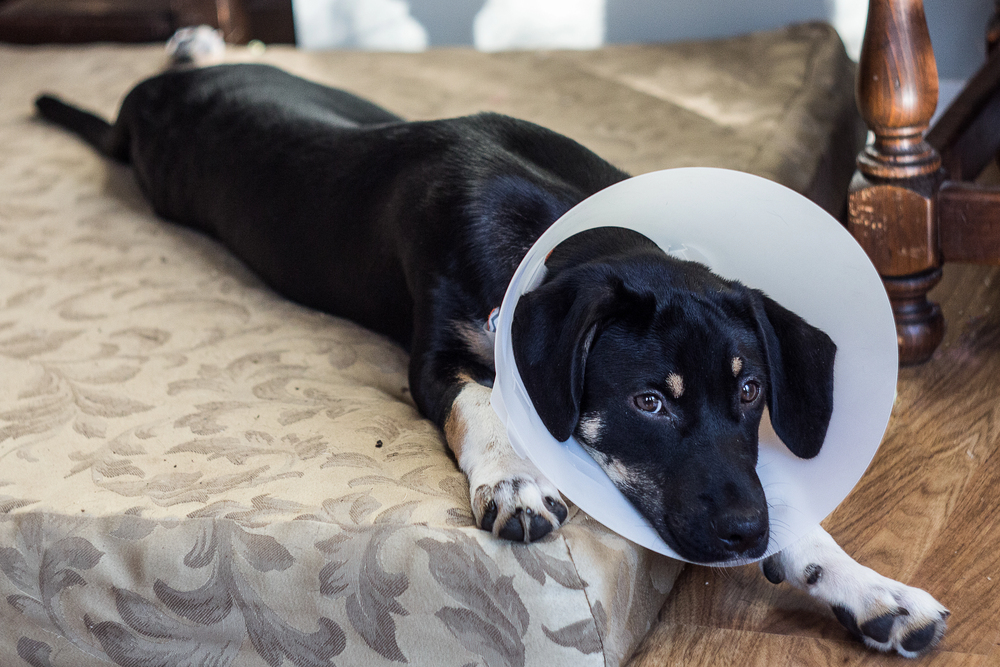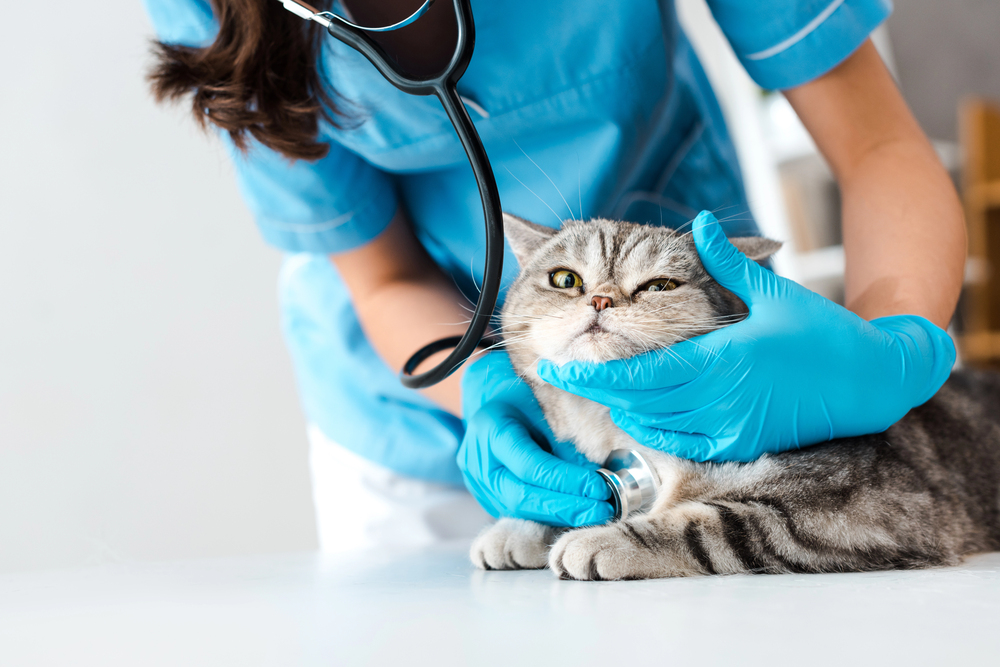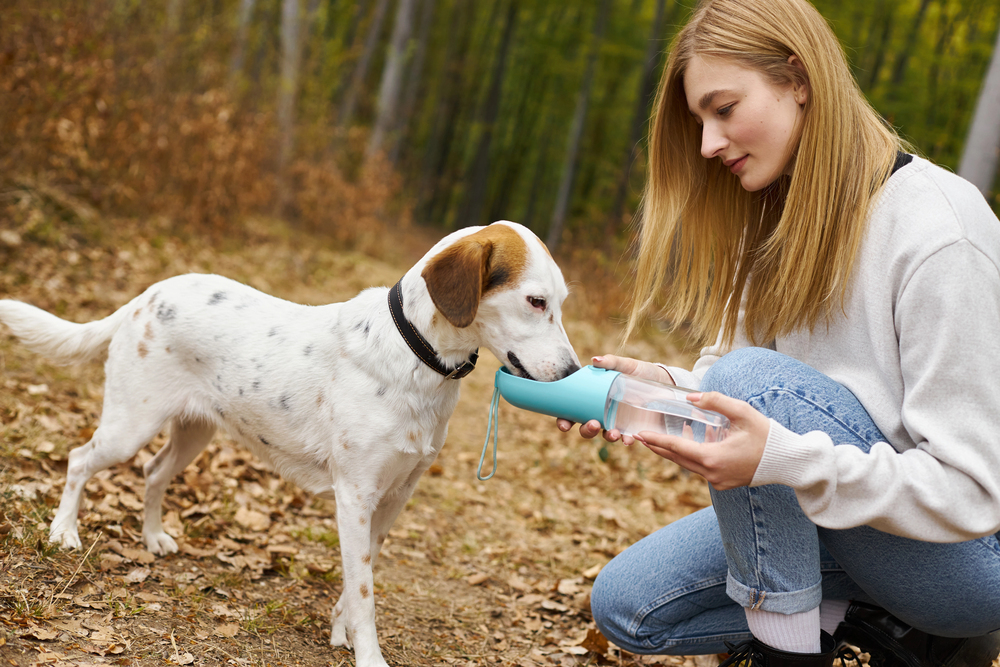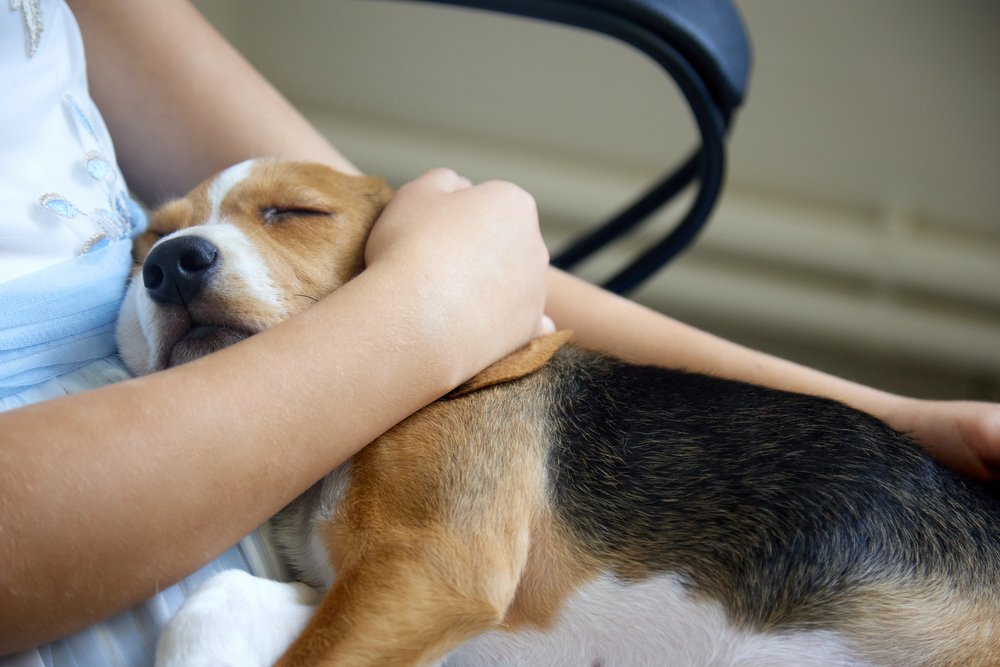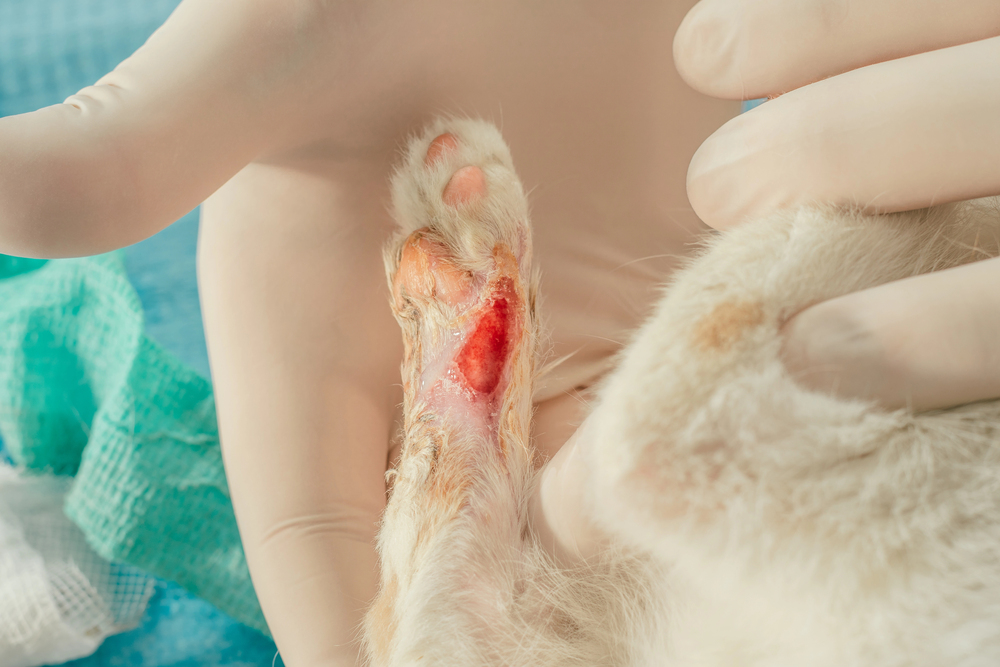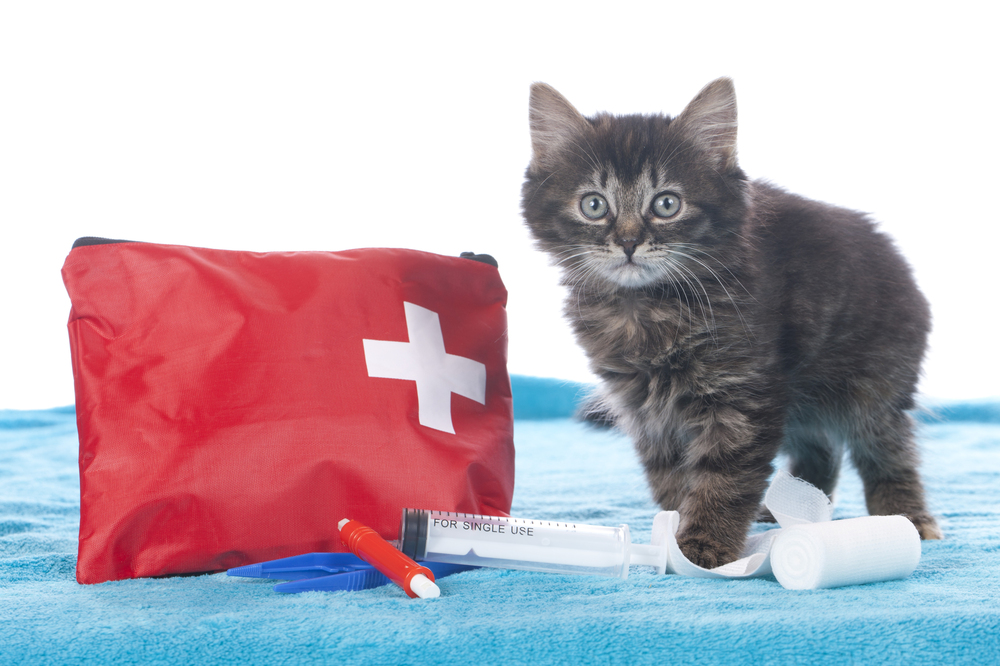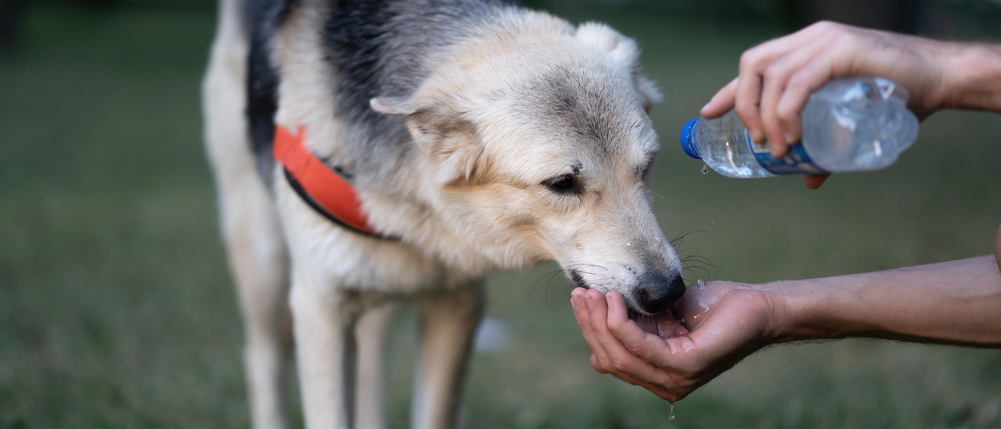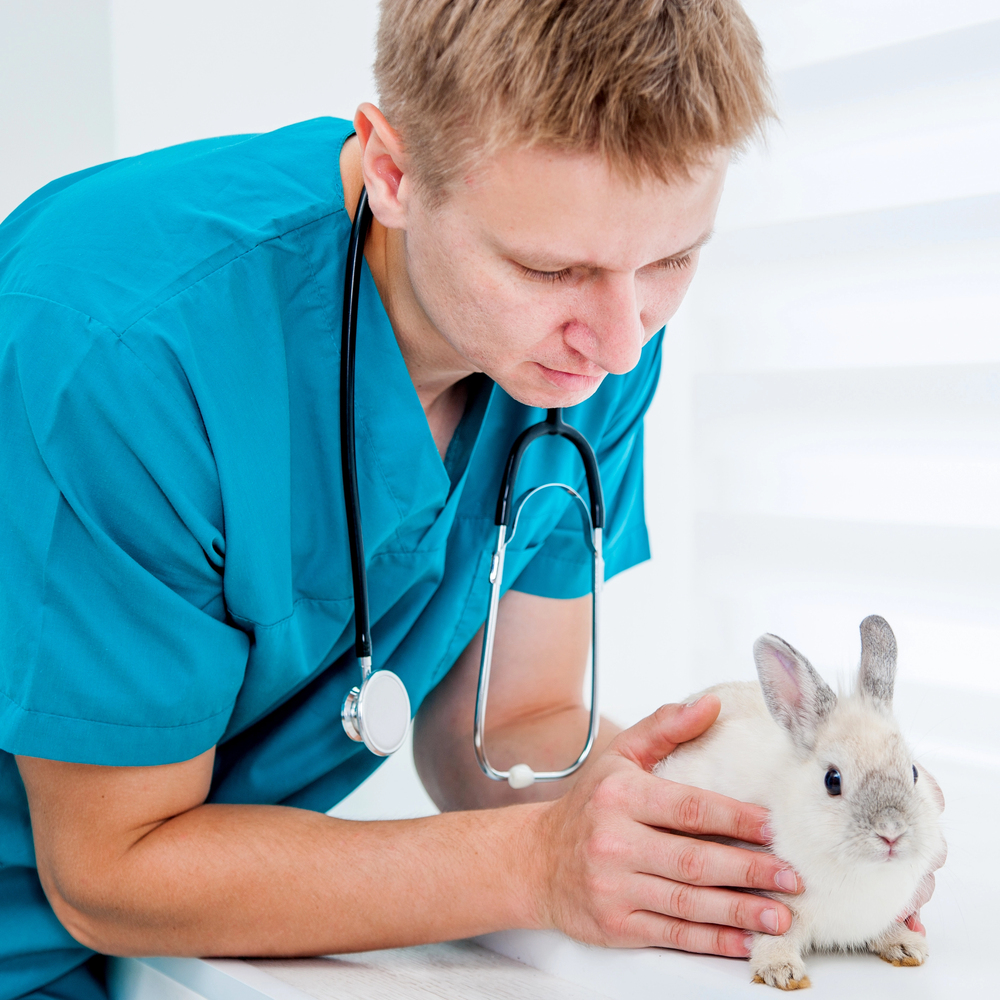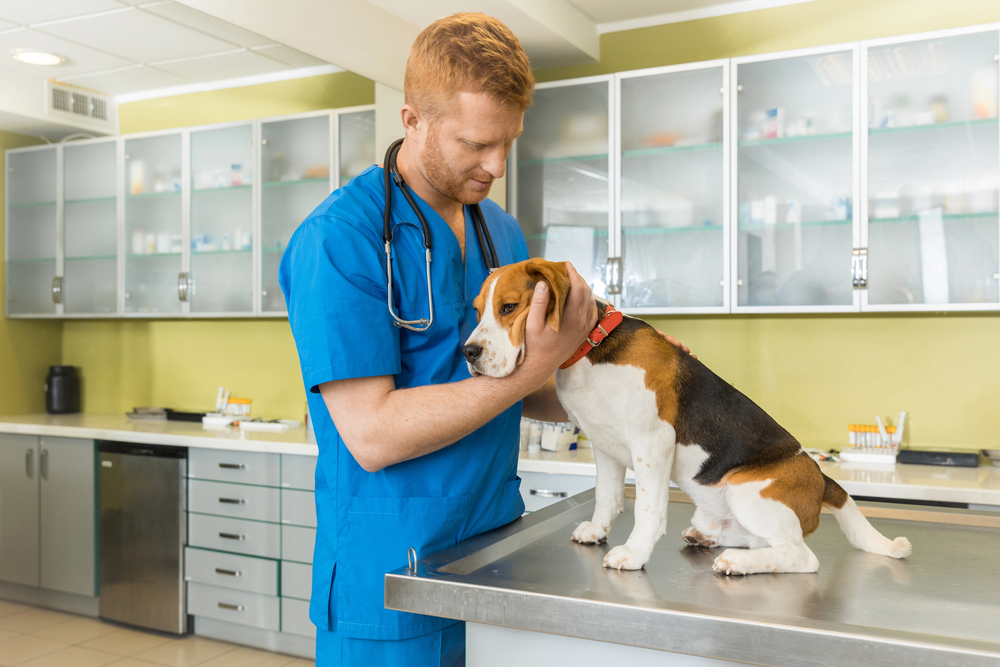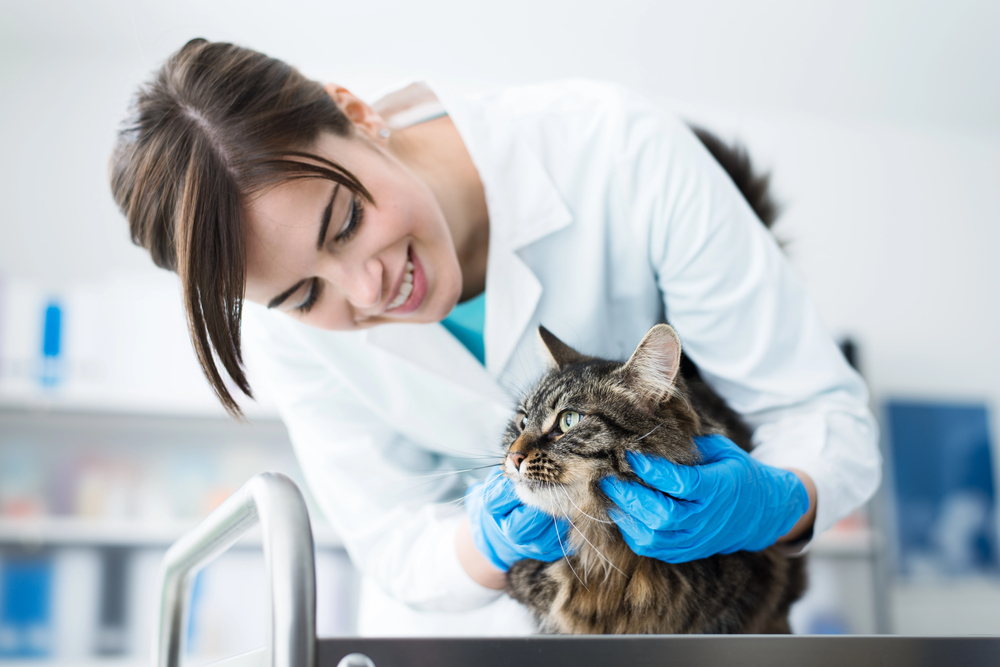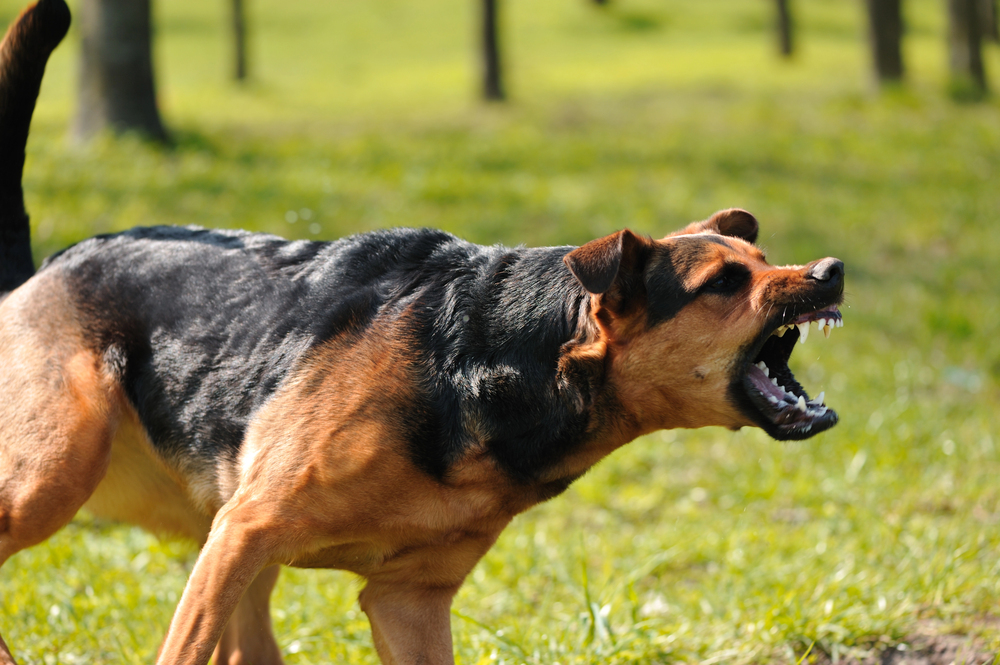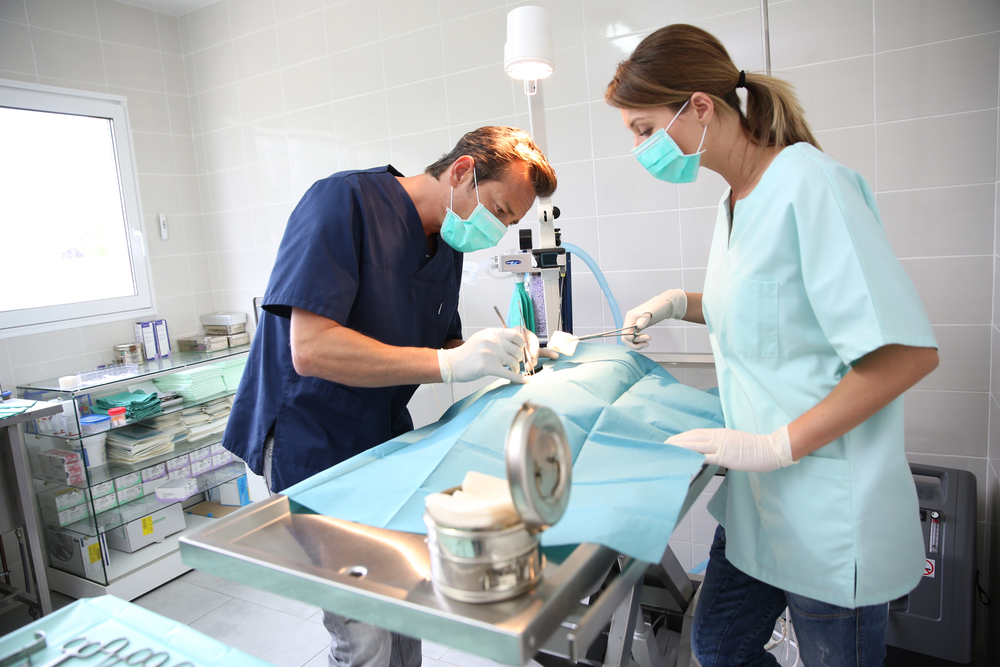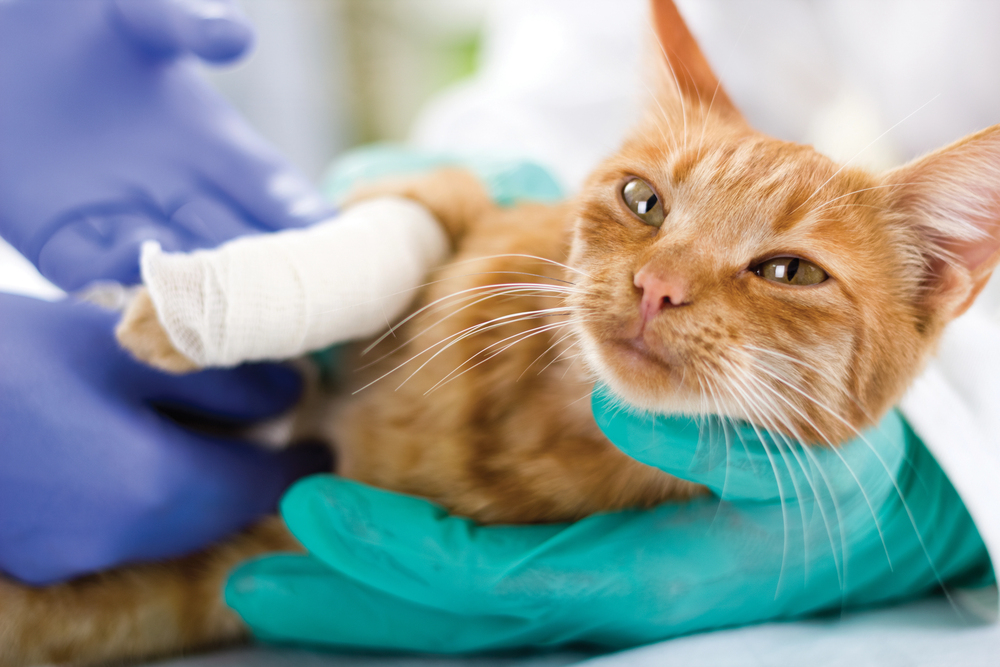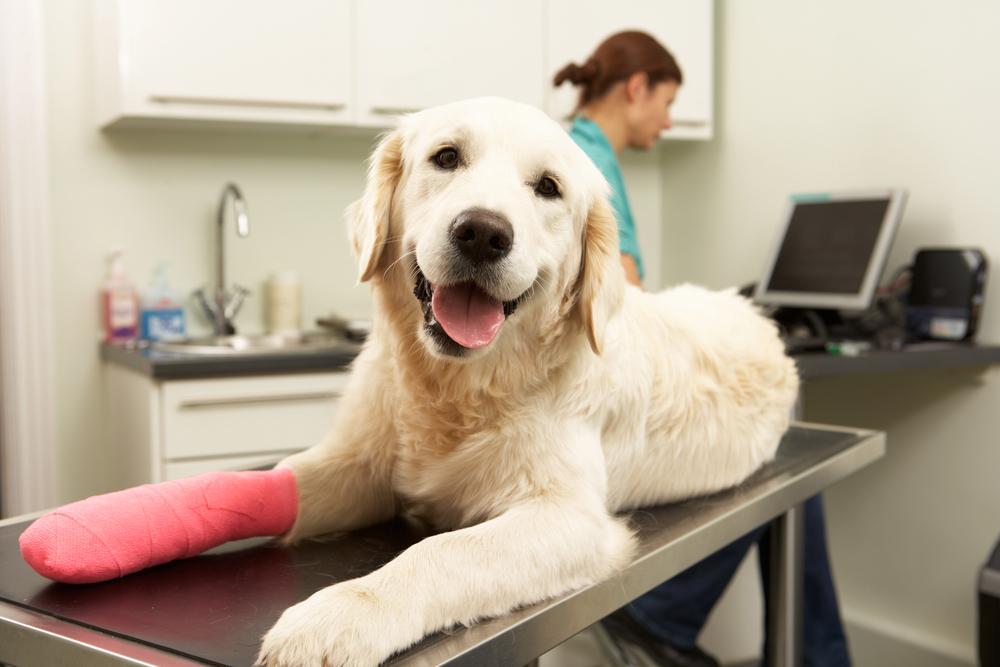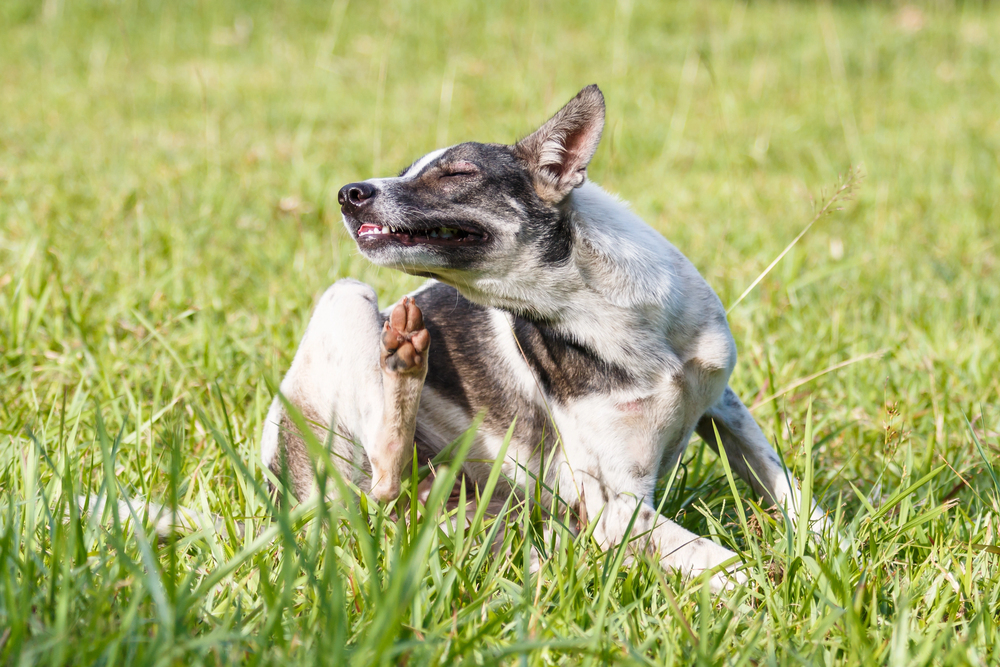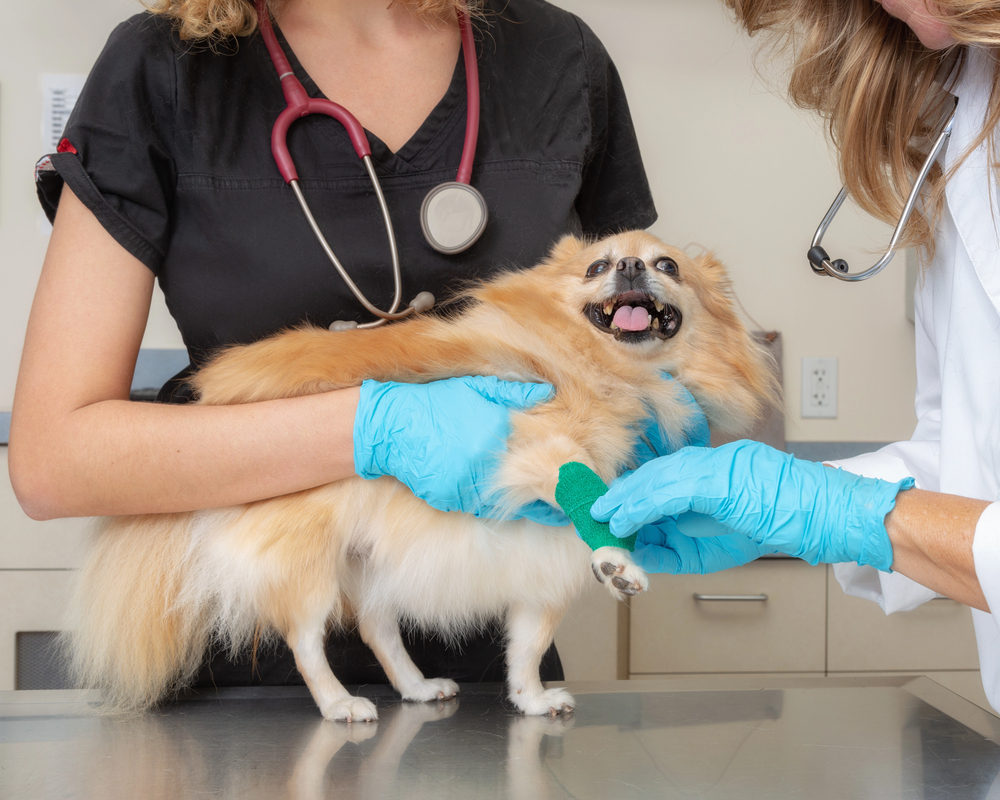Keep your pet safe from these emergencies
Read Time: 8 minutes
When the weather turns extreme, it’s not just humans who feel the heat—or the cold. Pets are highly vulnerable to environmental emergencies, especially during periods of excessive heat, cold snaps, wildfires, or storms. Understanding how to recognize the signs of distress and respond quickly could mean the difference between life and death for your pet.
Heatstroke in Pets: What You Need To Know
Heatstroke, also known as hyperthermia, is one of the most dangerous and fast-acting emergencies pets can face during hot weather. Unlike humans, pets don’t sweat to cool down. Dogs regulate temperature primarily through panting, while cats and other small animals have even fewer mechanisms to handle high heat.
Common Signs of Heatstroke:
- Excessive panting or drooling
- Rapid heart rate
- Bright red or pale gums
- Vomiting or diarrhea
- Weakness or collapsing
- Confusion or lethargy
- Seizures (in severe cases)
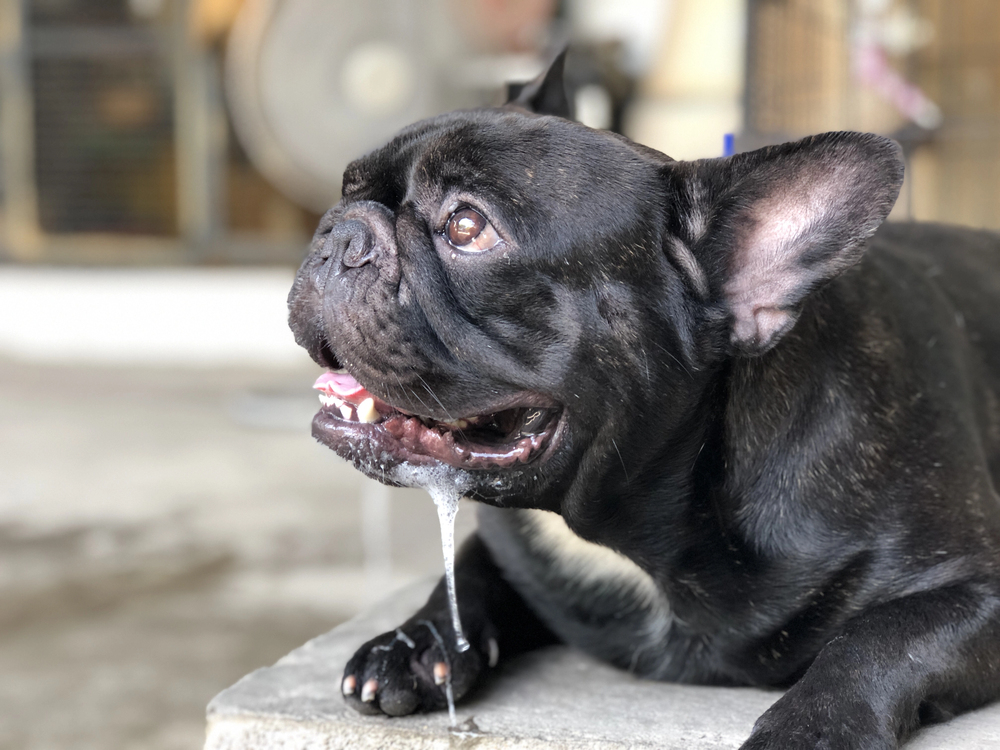
What To Do If You Suspect Heatstroke:
- Move your pet to a cooler area immediately—preferably indoors or into shade.
- Offer small amounts of cool (not cold) water to prevent shock.
- Apply cool, wet towels to the body, especially the head, neck, and belly.
- Avoid ice or ice-cold water, which can constrict blood vessels and slow cooling.
- Call your veterinarian or an emergency clinic right away.
Even if your pet seems to recover, heatstroke can cause internal damage that isn’t immediately obvious.
How To Prevent Heatstroke in Pets
These are some steps you can take to prevent heatstroke in your pets:
- Never leave pets in a parked car—even for a few minutes.
- Walk dogs early in the morning or later in the evening when temperatures are lower.
- Provide shade and fresh water at all times.
- Be mindful of hot pavement, which can burn sensitive paw pads.
Hurricane Season: Protecting Pets During Florida Storms
Florida pet owners are no strangers to hurricane season. From June to November, the threat of tropical storms and hurricanes brings not just wind and rain—but also the risk of sudden evacuations, power outages, and structural damage. For pet owners, planning ahead is essential to ensure your furry family members stay safe during severe weather.
Before the Storm: Prepare Early
A little preparation goes a long way. Don’t wait until a storm is approaching to make a plan for your pet.
Build a pet emergency kit with:
- 3–5 days’ worth of food and bottled water
- Medications and medical records
- Extra leash, collar, or harness
- Crate or carrier with ID tags attached
- Waste bags, litter, and cleaning supplies
- Comfort items like toys or blankets
Other smart prep tips:
- Keep your pet’s microchip info and tags up to date.
- Snap a current photo of your pet in case you get separated.
- Identify pet-friendly shelters, hotels, or boarding options ahead of time.
During the Storm: Keep Pets Indoors and Calm
When the storm hits, your pet should be indoors with you in a secure, quiet space.
- Choose a windowless room, away from loud noises and flying debris.
- Bring pets inside well before the storm starts—don’t wait until it’s pouring.
- Keep pets leashed or crated to prevent escape during moments of panic.
- Use background noise (like a TV or soft music) to help mask storm sounds.
- Offer treats and comfort items to reduce anxiety.
If your pet is prone to storm phobia, talk to your vet about calming options in advance of hurricane season.
After the Storm: Stay Cautious
Even after the wind and rain pass, hidden dangers can linger.
- Keep pets leashed when going outside—downed power lines, broken glass, and contaminated water are common hazards.
- Check fences and gates before letting pets roam freely.
- Be alert for snakes, displaced wildlife, or sharp debris.
- Monitor your pet for stress-related behavior changes like hiding, aggression, or loss of appetite.
Planning ahead is the best way to protect your pets when hurricanes threaten.
Include them in your emergency plan just like you would any other family member—and you’ll weather the storm together, safely.
Flooding: Fast-Rising Dangers for Pets
In Florida, flooding can occur quickly—especially during tropical storms or even heavy afternoon downpours. Pets are particularly vulnerable to rising waters, hidden currents, and contaminated runoff.
How flooding affects pets:
- Risk of drowning, especially for smaller animals
- Exposure to bacteria, parasites, and harmful chemicals in floodwater
- Panic or disorientation that can lead to escape or injury
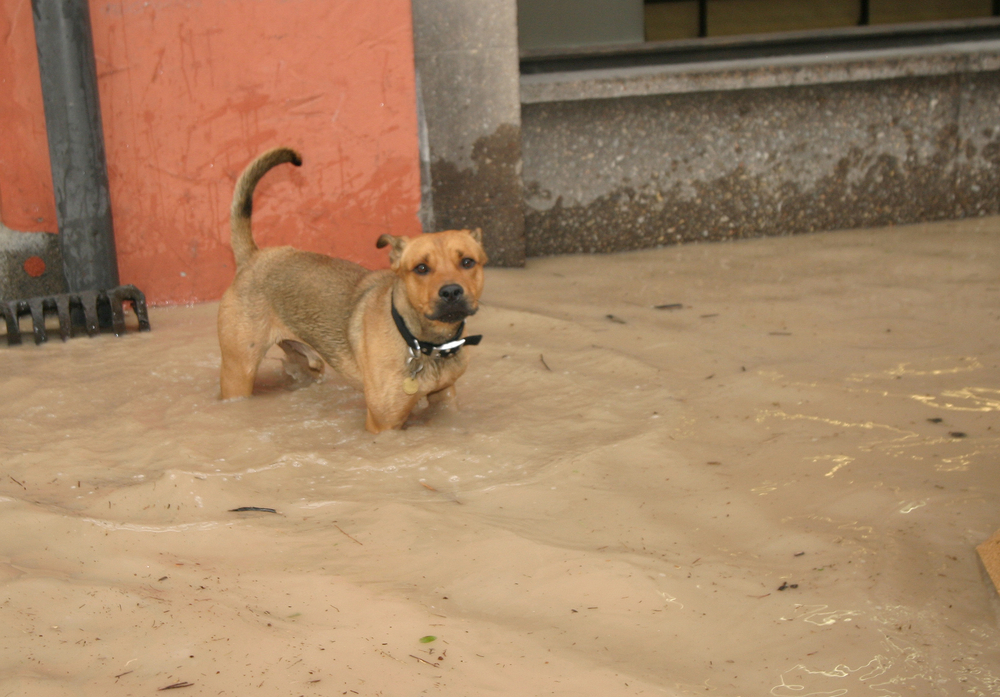
How to protect your pet:
- Never let your pet wade or drink floodwater
- Keep pets leashed during and after storms, as familiar areas may look different or be unsafe
- Watch for symptoms like vomiting, diarrhea, or lethargy after flood exposure—and call your vet if they appear
- Keep an emergency carrier or harness ready in case you need to evacuate quickly
Thunderstorms and Lightning: More Than Just Loud Noises
Florida leads the nation in lightning strikes, and summer thunderstorms are a near-daily occurrence in many regions. While you may enjoy watching a good storm, your pet likely feels very differently.
Risks to pets:
- Thunder-related anxiety or phobia
- Escape attempts through windows, fences, or doors
- Injuries from panic behaviors (chewing, clawing, running into objects)
- Rare but possible lightning strikes during outdoor exposure

How to help your pet furing dtorms:
- Provide a quiet, secure indoor space for your pet to retreat
- Use calming aids such as white noise, anxiety wraps, or vet-approved medications
- Avoid walks during storm-prone times of day (typically mid-afternoon in summer)
- Secure outdoor areas and check fencing regularly for weak spots
Poor Air Quality: Invisible, But Dangerous
While Florida doesn’t typically struggle with urban smog, but wildfires and seasonal algae blooms can cause dangerous spikes in air pollution. Smoke and airborne toxins can be especially hazardous to sensitive pets.
Pets most at risk:
- Brachycephalic (flat-faced) breeds like bulldogs, pugs, and Persian cats
- Pets with asthma, heart disease, or other respiratory conditions
- Senior pets and very young animals

Protecting pets from poor air quality:
- Keep pets indoors with windows closed when alerts are issued
- Limit exercise and outdoor playtime
- Use air purifiers or HVAC filters to improve indoor air
- Watch for signs like coughing, wheezing, or labored breathing, and contact your vet if they occur
Toxic Algal Blooms: Hidden Hazards in Water
Florida is no stranger to red tide (saltwater) and blue-green algae (freshwater) outbreaks. These blooms can release toxins into the air and water that are highly dangerous to both humans and animals.
Why it’s dangerous for pets:
- Pets may drink or swim in contaminated water
- Algal toxins can cause vomiting, diarrhea, seizures, liver failure, or even death
- Some toxins can become airborne and affect breathing

What to do:
- Avoid walking your pet near affected lakes, ponds, or beaches
- Always provide fresh, clean drinking water
- Rinse pets off after swimming in natural bodies of water—even if there’s no posted warning
- Check local advisories before visiting parks, lakes, or the coast
Wildlife Encounters: Increased After Disasters
Storms, floods, and land development can displace Florida’s abundant wildlife—putting pets at risk of dangerous encounters with snakes, raccoons, opossums, and even alligators.
Common hazards include:
- Snake bites (especially from venomous species like cottonmouths or rattlesnakes)
- Scratches or bites from raccoons and other territorial animals
- Rabies transmission
- Injuries from chasing or being chased by wild animals

How to reduce wildlife risks:
- Keep pets leashed on walks, even in your own neighborhood
- Avoid letting pets roam near woods, ditches, or underbrush
- Don’t leave food outside—this attracts wildlife
- If your pet is bitten or scratched, seek veterinary care immediately
Hypothermia and Frostbite: Cold Weather Risks for Pets
Florida might be known for its sunshine, but chilly weather still rolls in—especially during overnight cold snaps, winter storms, or unexpected temperature drops. While rare, pets in Florida can suffer from hypothermia and even frostbite under the right conditions, especially if they’re left outside without protection.
Hypothermia in Florida Pets: What To Watch for
Hypothermia happens when a pet’s body temperature drops too low, usually from prolonged exposure to cold, wet, or windy environments. In Florida, this could occur during a sudden cold front or if your pet gets soaked in the rain and stays outside too long.
At-risk pets in Florida include:
- Small or toy breeds (like Chihuahuas or Yorkies)
- Short-haired dogs and cats
- Elderly pets, kittens, or puppies
- Pets with medical conditions or low body fat
Signs of hypothermia:
- Shivering or trembling
- Sluggishness or acting “off”
- Cold ears, paws, or tail
- Pale gums or slowed breathing
- Unresponsiveness in severe cases
What to do:
- Bring your pet indoors immediately.
- Wrap them in warm, dry blankets or towels.
- Offer warmth using your body heat or warm (not hot) water bottles wrapped in cloth.
- Call your veterinarian, even if your pet seems to improve.
Frostbite in Florida? It’s Possible.
Frostbite is damage to the skin and underlying tissues caused by freezing temperatures. In Florida, it’s uncommon—but not impossible—especially if temperatures dip near or below freezing and pets are exposed for extended periods.
Common frostbite areas:
- Ear tips
- Tail
- Nose
- Paw pads
Signs of frostbite:
- Pale, bluish, or gray skin
- Cold, firm areas on the body
- Swelling, redness, or blisters
- Sensitivity or pain when touched
- Blackened skin in severe cases
What to do:
- Gently warm the area with lukewarm water (never hot).
- Do not rub or massage the affected area.
- Keep your pet dry and warm.
- Contact your vet right away—frostbite may not be obvious until damage is advanced.
How To Protect Your Pets in Florida’s Colder Weather
Bring pets indoors during cold snaps or when temps drop below 50°F.
- Dry pets off immediately if they get wet outside.
- Provide warm bedding and a draft-free resting place.
- Use sweaters or booties for short-haired or small dogs when outside.
- Check paws for signs of cracking or cold-related injury after walks.
Even in Florida, pets can feel the cold—so it’s always better to be safe than sorry.


